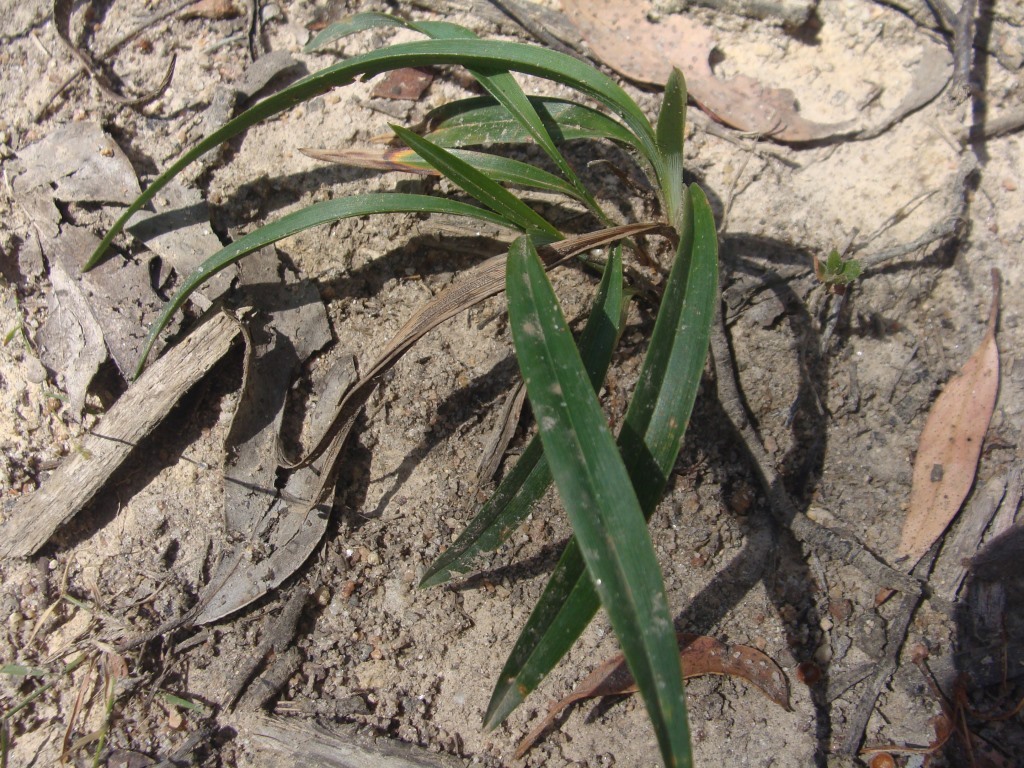Dianella sp. aff. caerulea (West Gippsland)
Plants rhizomatous, forming small individual clumps or loose clonal colonies, to 30(–60) cm high. Leaves basal, usually spreading, often arcuate, not closely sheathing at base; sheaths usually reddish with 6–10 prominently raised nerves either side of the keel, sometimes finer but not raised nerves discernible between the raised ones; lamina flat or margins somewhat recurved, 7–15(–20) cm long, 5–9(–15) mm wide, concolorous or slightly paler beneath, not or only slightly glossy above, margins and midrib on lower surface irregularly serrate-scabrous. Inflorescence extending beyond foliage, usually rather few-flowered; flowers 12–16 mm wide; perianth segments 6–8 mm long, blue, sepals usually slightly longer than petals, both spreading to slightly recurved; stamens shorter than perianth segments, filament swellings (strumae) yellow, anthers pale lilac to purple, 2–3 mm long. Berry ovoid to globular, 6–10 mm long, china-blue; seeds c. 3.0 mm diam. Flowers mostly Sep.–Jan.
GipP, EGL, EGU, WPro, HSF, HNF, Strz, VAlp. Also NSW, Tas. Moist lowland to foothill forests south of the Divide, from Mt Disappointment east to the NSW border (e.g.Kinglake, Dandenong Ranges, Bunyip, Wilsons Promontory, Valencia Ck, Orbost area).
Commonly mistaken for Dianella caerulea. This species was originally described as D. laevis var. aspera Benth. (type specimen 'Moe Swamp') but that name cannot be used as D. laevis is a synonym of D. longifolia var. longifolia. Despite apparent similarities to D. caerulea, molecular studies have shown it not to be closely to either D. caerulea or D. longifolia and perhaps most closely allied to D. tasmanica. A new name is required for it. Apart from vegetative characters, the lilac to purple anthers are distinctive.
 Spinning
Spinning